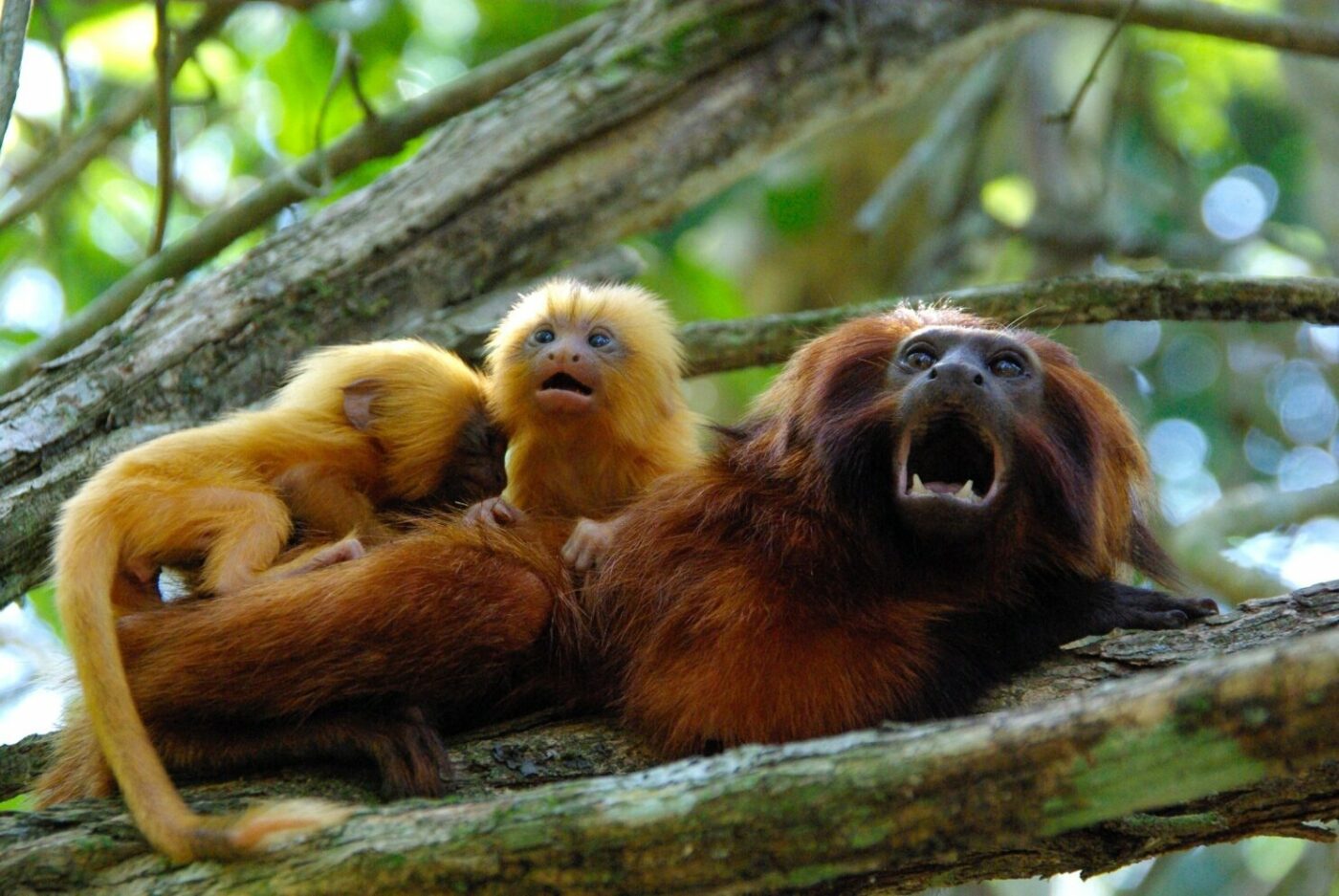The Threatened Tamarins: Conservation Efforts for Brazil’s Primate Species

Brazil’s lush landscapes are not only home to vibrant cultures and diverse ecosystems but also harbor a unique array of primate species, including the charismatic and threatened tamarins. Tamarins, known for their small size, distinctive facial markings, and playful behavior, face numerous challenges that jeopardize their survival. This article explores the conservation efforts undertaken to protect these endangered primates and the critical role they play in maintaining Brazil’s ecological balance.
The Diversity of Brazilian Tamarins:
Brazil hosts several tamarin species, each with its own ecological niche and distinctive characteristics. Among them, the golden lion tamarin (Leontopithecus rosalia) stands out as an iconic species. Distinguished by its vibrant orange-gold fur and tufted ears, the golden lion tamarin is a symbol of Brazil’s commitment to primate conservation.
Threats to Tamarins:
Despite their unique qualities, tamarins in Brazil face a myriad of threats, pushing them towards the brink of extinction. Habitat loss due to deforestation, agricultural expansion, and urbanization deprives these primates of their natural homes. Additionally, the illegal pet trade poses a significant threat, disrupting wild populations and compromising the genetic diversity essential for their survival.
Conservation Initiatives for Tamarins:
In response to the challenges facing tamarin populations, various conservation initiatives have been implemented across Brazil, focusing on both habitat preservation and direct species protection.
- Protected Areas and Habitat Restoration:
- Establishing and expanding protected areas helps safeguard the natural habitats of tamarins. Efforts include the creation of reserves and corridors that connect fragmented habitats, allowing for the free movement of these primates.
- Community-Based Conservation:
- Engaging local communities in tamarin conservation is crucial. Collaborative initiatives empower residents to participate in habitat restoration, enforce anti-poaching measures, and develop sustainable practices that benefit both people and primates.
- Research and Monitoring:
- Ongoing research provides essential insights into tamarin behavior, population dynamics, and the impact of conservation interventions. Monitoring programs enable scientists and conservationists to assess the effectiveness of their efforts and adapt strategies accordingly.
- Education and Awareness:
- Raising awareness about the importance of tamarin conservation is vital. Educational programs, community workshops, and outreach initiatives help foster a sense of responsibility and appreciation for these primates among local communities and the broader public.
- International Collaboration:
- Tamarin conservation extends beyond national borders. Collaborative efforts with international organizations, zoos, and research institutions facilitate the exchange of knowledge, resources, and expertise to enhance global conservation strategies.
The Role of Technology in Conservation:
Advancements in technology, including satellite imagery, GPS tracking, and genetic analysis, have revolutionized tamarin conservation. These tools provide valuable data for habitat mapping, population monitoring, and genetic management, enabling more informed and effective conservation strategies.
Challenges and Future Prospects:
While progress has been made, challenges persist in the conservation of tamarin species. Sustainable development, ethical tourism practices, and ongoing research are essential components of a comprehensive conservation approach. The future of Brazil’s tamarins relies on the continued commitment of governments, communities, and conservation organizations to address the root causes of their decline.
Preserving Brazil’s tamarin species is not just an ecological imperative but also a testament to the country’s commitment to biodiversity conservation. Through collaborative efforts, technological innovations, and community engagement, Brazil aims to secure a future where tamarins thrive in their natural habitats. As guardians of the nation’s primate legacy, the ongoing conservation initiatives for tamarins reflect a broader commitment to protecting the rich tapestry of life that makes Brazil a global biodiversity hotspot.

